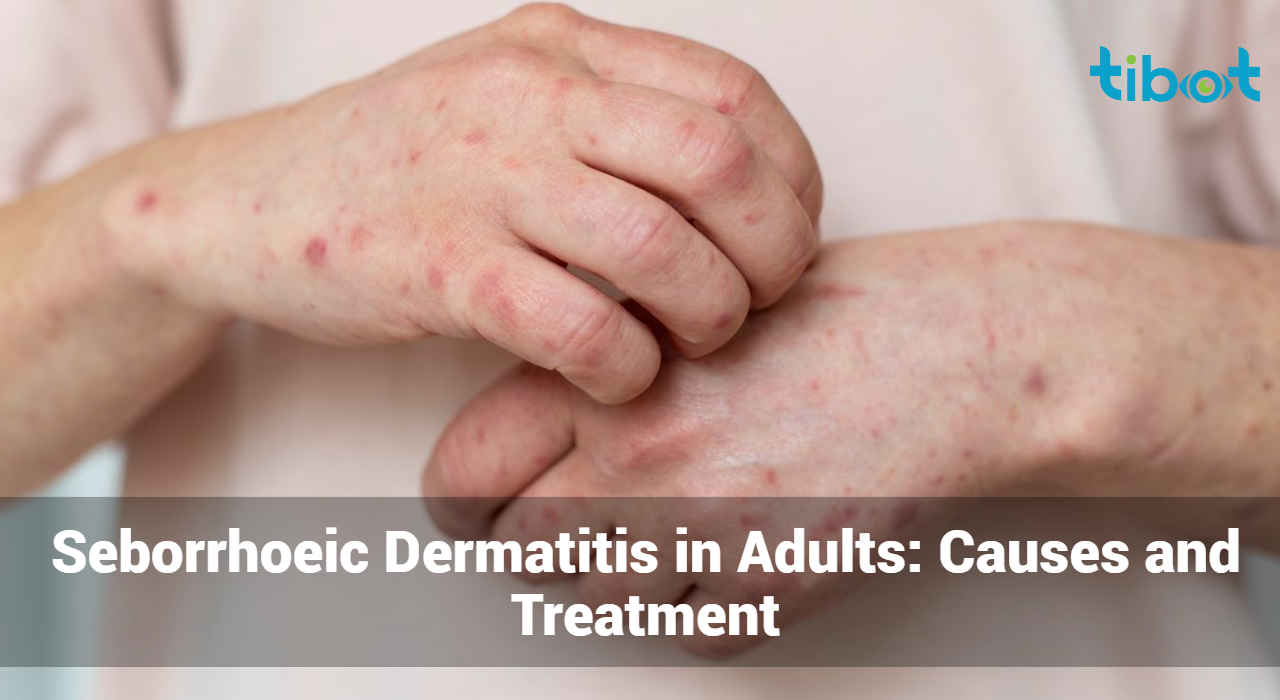Seborrhoeic Dermatitis in Adults: Causes and Treatment

Seborrhoeic dermatitis is a common, chronic inflammatory skin condition that primarily affects areas of the skin rich in sebaceous (oil) glands. This article will delve into the causes, symptoms, and effective treatments for seborrhoeic dermatitis in adults, providing a comprehensive resource for those seeking relief.
What is Seborrhoeic Dermatitis?
Seborrhoeic dermatitis is characterized by red, flaky, greasy patches on the skin, often accompanied by itching. It can occur on various parts of the body but is most commonly found on the scalp, face, and upper body. In adults, it may appear as dandruff on the scalp or more severe forms on the face and torso.
What Causes of Seborrhoeic Dermatitis?
Understanding the underlying causes of seborrhoeic dermatitis is crucial for effective management. While the exact cause remains unclear, several factors are believed to contribute to the development of this condition:
1. Malassezia Yeast: The Malassezia species of yeast, which normally resides on the skin, is thought to play a significant role in seborrhoeic dermatitis. An overgrowth of this yeast can trigger an inflammatory response, leading to the characteristic symptoms.
2. Sebaceous Glands Activity: Increased activity of sebaceous glands results in excess oil production, which can create an environment conducive to yeast growth. This is why seborrhoeic dermatitis is often associated with oily skin and hair.
3. Genetics: There may be a genetic predisposition to developing seborrhoeic dermatitis. If you have a family history of skin conditions, you may be at a higher risk.
4. Environmental Factors: Environmental triggers such as cold, dry weather, or exposure to harsh chemicals can exacerbate the condition. Stress, fatigue, and hormonal changes may also play a role in flare-ups.
5. Medical Conditions: Certain medical conditions, such as Parkinson’s disease, HIV/AIDS, or other immune system disorders, can increase susceptibility to seborrhoeic dermatitis.
6. Dietary Factors: Some studies suggest that diet may influence seborrhoeic dermatitis. High sugar, refined carbohydrates, and dairy products could potentially exacerbate symptoms.
What Are the Symptoms of Seborrhoeic Dermatitis?
Seborrhoeic dermatitis presents with a range of symptoms that can vary in severity. Common symptoms include:
- Red, Inflamed Skin: Affected areas often appear red and irritated, particularly on the scalp, face, and chest.
- Flaky, Greasy Scales: Yellow or white flakes develop on the scalp (dandruff) and other oily areas, often leading to noticeable scaling.
- Itching: The condition typically causes itching, which can range from mild to severe, leading to discomfort.
- Crusty Lesions: In more severe cases, crusty patches may form, especially on the scalp or face.
- Oily Skin: The skin in affected areas may appear shiny or greasy, particularly in regions with a high concentration of sebaceous glands.
- Dryness or Peeling: Some individuals may experience dryness or peeling skin alongside oily patches.
- Patches of Skin: Symptoms may appear as localized patches on the scalp, eyebrows, sides of the nose, ears, or chest.
Recognizing these symptoms early can aid in effective management and treatment. If you suspect you have seborrhoeic dermatitis, consulting a dermatologist or healthcare professional is advisable for a proper diagnosis and treatment plan.
Analyze Skin Diseases
Use our AI chatbot to determine your skin condition
What Are The Treatment Options for Seborrhoeic Dermatitis?
Treating seborrhoeic dermatitis involves a combination of self-care measures and medical treatments. Here are effective options for managing this condition:
1. Medicated Shampoos
Over-the-counter and prescription shampoos containing active ingredients can help control symptoms:
- Ketoconazole: An antifungal that reduces yeast growth.
- Selenium sulfide: Decreases flakiness and itching.
- Coal tar: Helps reduce scaling and inflammation.
- Zinc pyrithione: Antifungal and antibacterial properties that can reduce dandruff.
2. Topical Treatments
In addition to shampoos, various topical treatments can help manage seborrhoeic dermatitis:
- Topical corticosteroids: These creams or lotions reduce inflammation and itching. They should be used sparingly to avoid skin thinning.
- Calcineurin inhibitors: Medications like tacrolimus and pimecrolimus can help reduce inflammation without the side effects associated with steroids.
- Antifungal creams: If yeast overgrowth is a significant factor, topical antifungal treatments may be recommended.
3. Lifestyle Changes
Making certain lifestyle adjustments can help alleviate symptoms:
- Regular Cleansing: Gently cleanse affected areas daily to remove excess oil and scales without irritating the skin.
- Moisturize: Use non-comedogenic moisturizers to keep the skin hydrated without clogging pores.
- Stress Management: Stress can exacerbate symptoms, so consider practices such as yoga, meditation, or other relaxation techniques.
4. Dietary Adjustments
While research is still ongoing, some individuals find relief by making dietary changes:
- Reduce sugar and refined carbs: Limiting these may help decrease inflammation.
- Incorporate anti-inflammatory foods: Foods rich in omega-3 fatty acids, antioxidants, and probiotics may support skin health.
5. Professional Treatments
For severe or resistant cases, consulting a dermatologist is essential. They may recommend:
- Phototherapy: Controlled exposure to ultraviolet light can help reduce symptoms in some individuals.
- Systemic medications: In cases linked to severe underlying conditions or when topical treatments are ineffective, oral medications may be prescribed.
Preventive Measures
Taking preventive steps can help manage seborrhoeic dermatitis and minimize flare-ups:
- Identify triggers: Keep a diary to track symptoms and potential triggers, such as stress, weather changes, or specific foods.
- Maintain a consistent skincare routine: Regular cleansing and moisturizing can keep the skin balanced and reduce flare-ups.
- Protect the skin: Use gentle, fragrance-free products to avoid irritation.
Conclusion
Seborrhoeic dermatitis is a manageable condition that can significantly impact quality of life if left untreated. By understanding its causes, recognizing symptoms, and implementing effective treatments, adults can find relief and prevent flare-ups. If you suspect you have seborrhoeic dermatitis, consult with a healthcare professional to develop a tailored treatment plan. With the right approach, you can keep your skin healthy and comfortable, even during flare-ups.





